Art World
5 Meaningful Ways the Art World Can Help Fight Climate Change, According to Experts in the Field
At a conference in London last week, arts leaders gathered to discuss ways that the art world can become more sustainable.
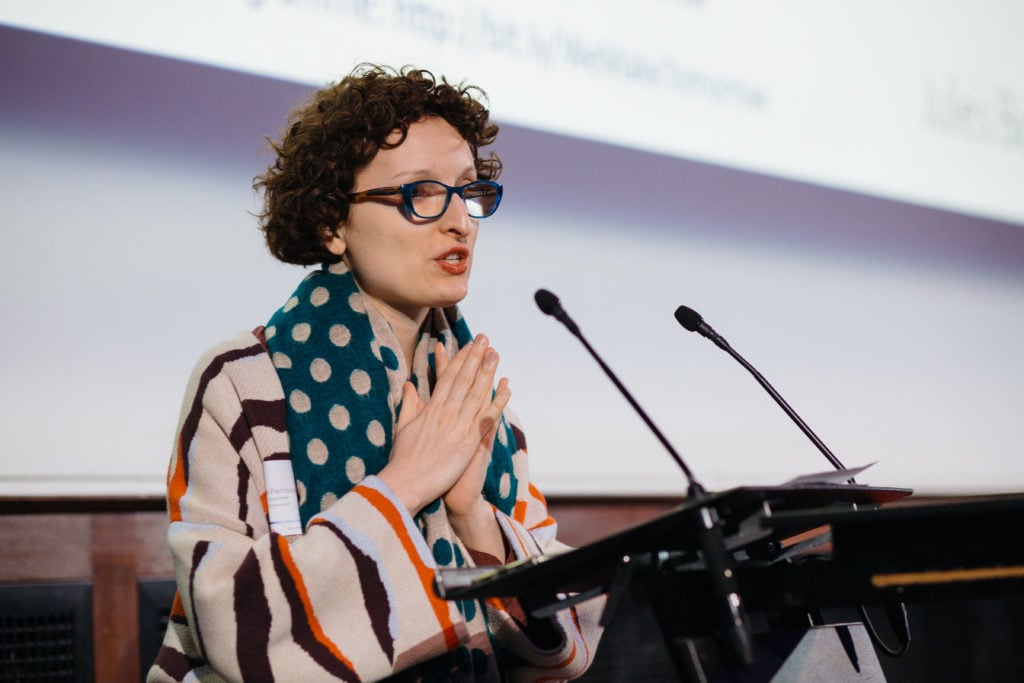
At a conference in London last week, arts leaders gathered to discuss ways that the art world can become more sustainable.

Naomi Rea

As we settle into a new decade, the art world is increasingly sounding the alarm on the climate emergency.
From panel discussions at art fairs, to art projects and institutional commitments, the creative sector has come around to actually walking the walk after years of only talking.
Organizations including Extinction Rebellion and individuals like Greta Thunberg have galvanized the sudden shift towards public awareness of climate-change science, and more and more people now recognize that we are on the precipice of an important historical moment. The actions we take over the next decade could be the key to avoiding climate disaster.
Last June, the UK became the first major economy to commit to net zero emissions by 2050. At a conference organized by the London-based charity Julie’s Bicycle last week, Chris Stark, the chief executive of the committee on climate change, the independent body that is advising the UK government on the task, emphasized that “every single sector has a job to do to get to net zero.”
This includes the arts.
Not least because, as Julie’s Bicycle founder Allison Tickell pointed out in her introductory remarks, “disappearing nature is also disappearing culture.” At the conference, titled “We Make Tomorrow,” artists, activists, and institutional leaders gathered to discuss what the art world can do to mitigate or indeed reverse the detrimental effects of climate change.
“We realized that there was a tipping point, that we could no longer just attend to our own house,” Frances Morris, the director of Tate Modern, explained at the conference, referring to the ambitious sustainability plan that Tate announced last summer. The institution is now en route to net zero emissions by 2030.
“There was a moment when we had to offer some companionship, leadership, and understanding, and to create a context for the visual arts sector to begin to move forward,” she said.
Similarly, Lucia Pietroiusti, the curator of “general ecology” at the Serpentine Galleries, explained that she founded the initiative a few years ago as a way “to infect other art institutions with the ecological bug.” The program aims to model what an ecologically friendly institution could look like.
Here are five key insights from the conference into how arts institutions can tackle the climate crisis.
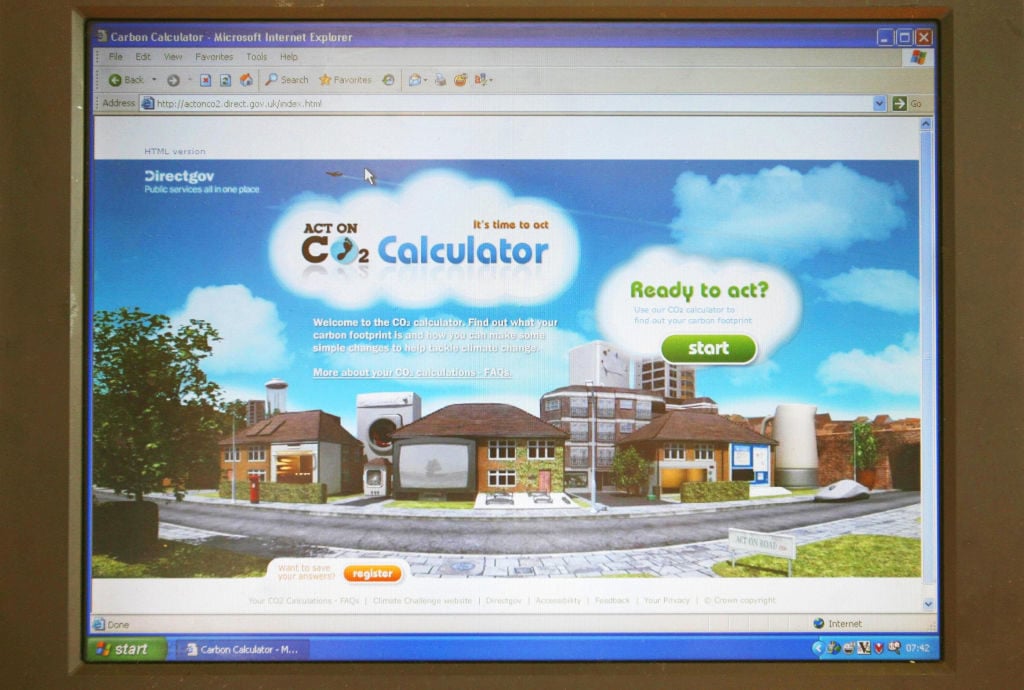
An online calculator that enables people to work out their carbon footprints using Government-recognized data and calculations. Photo by Johnny Green – PA Images/PA Images via Getty Images.
Institutions can measure their own carbon footprints, much in the way that anyone trying to lose weight might count his or her calories.
To take stock of the extent of pollution and to get a handle on how much needs to be cut down, Julie’s Bicycle, among other organizations, offers a free online carbon and environmental calculator to record and understand an institution’s impact.

Photo courtesy Wikicommons.
Once an institution understands how much and where it is polluting, it can take steps to reduce its carbon footprint. Organizations can think about transportation, for example: Is it possible to cut down on air travel? What about taking public transportation instead of using a private vehicle? When transporting artworks, can it arrange to “car pool” with another group?
Institutions are advised look to the three Rs: reduce, reuse, recycle. Organizations should also try to eliminate all landfill waste by using reusable crates and sourcing alternatives to bubble wrap (and plastic cups).
When it comes to buildings, institutions should look to invest in eco-friendly infrastructure and find green sources of energy to power the building’s electrical and heating systems. Traditional incandescent lights can be swapped out for eco-friendly options like LEDs (which will save the organization money too).
They are encouraged to get creative in thinking about other ways to reduce waste. For example, the Tate uses England’s abundance of rainwater to flush its toilets.
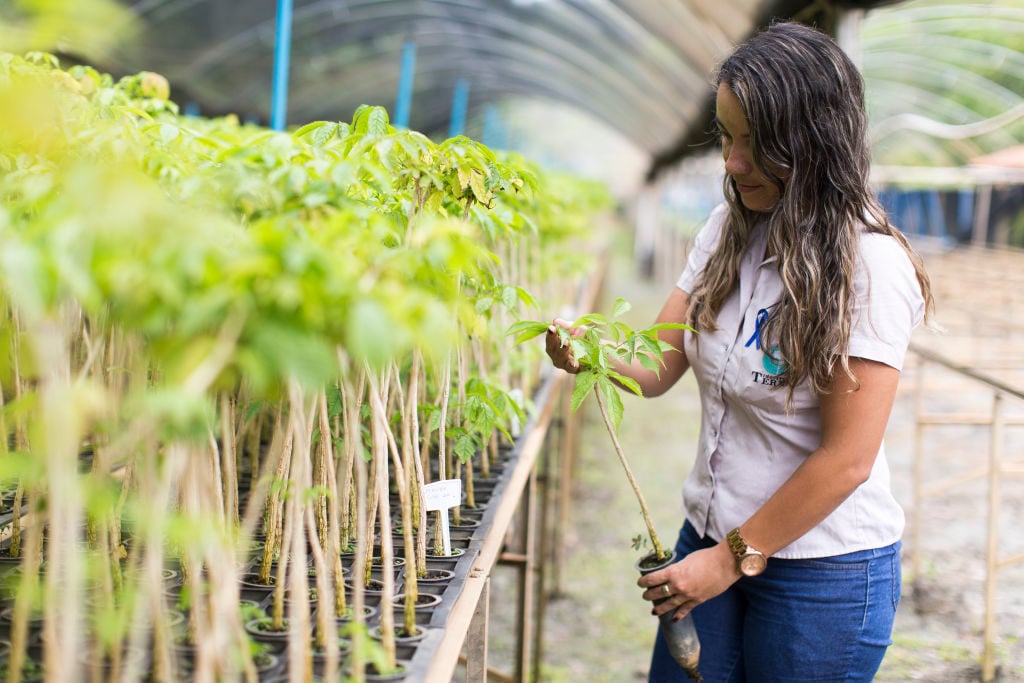
A reforestation project at Instituto Terra in Brazil. Photo by Christian Ender/Getty Images.
In places where emissions cannot be reduced, organizations can offset their carbon footprints as a secondary aim.
This means funding emissions-reduction initiatives in an effort to “balance out” one’s own carbon impact. Money can be given to tree-planting initiatives, projects to protect forests, or to fund renewable-energy programs.
Luckily, as we found out, it is very, very inexpensive to do this.
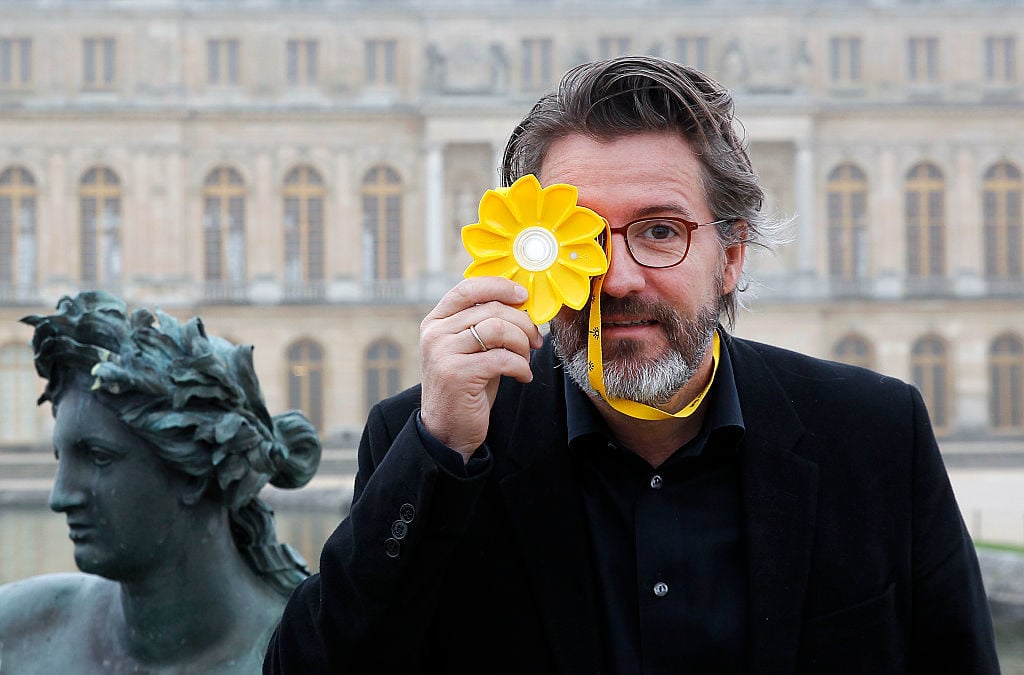
Danish-Icelandic artist Olafur Eliasson poses with a little sun in front of the Chateau de Versailles. Photo by Chesnot/Getty Images.
While science plays a key role in conveying the urgency of the climate emergency, artists can also play an important part.
Art has a way of getting ahead of the general discourse because it can convey information in novel ways. Lucia Pietroiusti even suggests a radical redefinition of what constitutes an artwork.
Part of the ethos of the Serpentine’s General Ecology program is to expand the definition of art to include environmental campaigns.
“By calling something an artwork, you are allowing an institution to support it,” she explains, adding that this is just one of her “tricks” to allows arts institutions to support environmental projects.
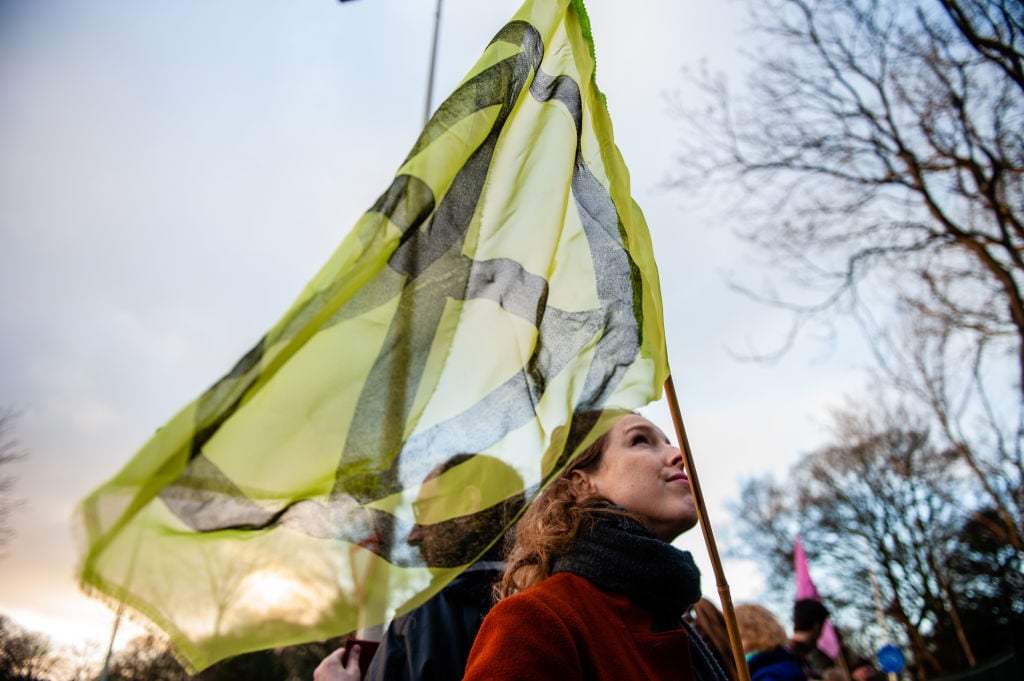
An activist from Extinction Rebellion. Photo by Romy Arroyo Fernandez/NurPhoto via Getty Images.
As time goes on, it is becoming increasingly evident that the art world needs to rethink its existing structures to become sustainable.
“Business as usual is not possible,” Frances Morris says. “The growth model is deeply damaged. My whole career has been spent pushing at that growth model, celebrating increasing activity, increasing numbers, unstoppable acquisitions, accumulation of tangible heritage. All that is up for grabs.”
So, instead of always pushing for bigger and better productions, organizations need to think about decreasing the size of their buildings and prioritizing collections that don’t require enormous space. And instead of being seduced by sponsorships from deep-pocketed organizations invested in the fossil-fuel industry, institutions should look for new funding models.